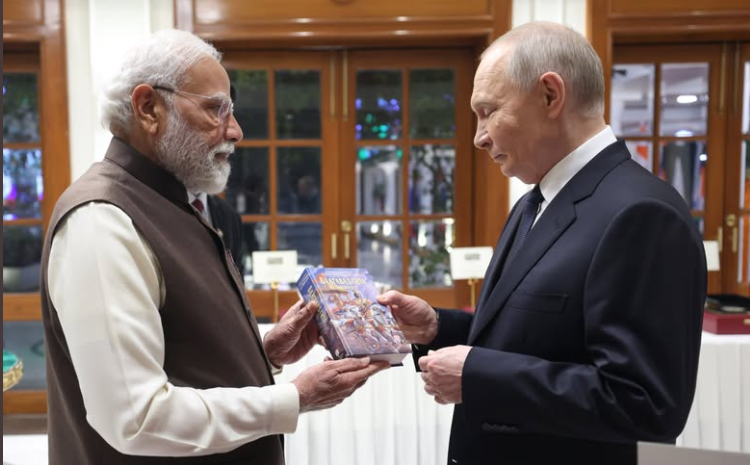Southeast Asia Turns to India to Revitalize Tourism
- InduQin
- Jun 9
- 3 min read
Southeast Asian nations are actively courting Indian tourists to reduce reliance on Chinese visitors by easing visa rules, boosting air connectivity, and promoting travel packages. Flight capacity between India and six key countries is set to rise by 15.6% in 2025, marking a 29% increase over 2019 levels. Vietnam has seen remarkable growth, while destinations like Cambodia and the Philippines are enhancing direct links. Indian airlines are reclaiming market share, highlighting the growing significance of India-Southeast Asia tourism ties.

Southeast Asian countries are shifting their focus toward Indian travelers as part of a strategic effort to diversify their tourism markets amid a decline in Chinese tourist arrivals. By relaxing visa requirements, launching targeted promotional campaigns, and offering competitive travel packages, these nations aim to reduce their dependence on a single market and tap into India's growing outbound travel segment.
Recent data from global travel intelligence provider OAG highlights a substantial increase in air connectivity between India and six prominent Southeast Asian countries—Thailand, Singapore, Malaysia, Vietnam, Indonesia, and Myanmar. The total seat capacity on flights between these regions is projected to grow by 15.6% in 2025, reaching a record 10.8 million seats, compared to 9.35 million in 2024. This marks a remarkable 29% increase over pre-pandemic levels in 2019, signaling the region’s commitment to strengthening ties with Indian travelers.
Vietnam: A Rising Star in Indian Tourism
While traditional destinations like Thailand, Singapore, and Malaysia continue to dominate in terms of passenger seat capacity, Vietnam has emerged as a standout performer. The number of Indian visitors to Vietnam in 2024 soared to nearly three times the figures recorded in 2019. This growth is underpinned by a revised bilateral air agreement signed in 2023 that boosted weekly flight entitlements from 28 to 42. As a result, airlines such as Vietnam Airlines and VietJet have capitalized on the opportunity, carving out significant market share on these routes.
India, previously a minor player in Vietnam’s inbound tourism, has now become the country’s sixth-largest source market as of 2024. Beyond tourism, Vietnam is positioning itself as a transit hub for Indian travelers heading to China, especially given the limited direct air connectivity between India and China despite ongoing efforts to establish such links.
Expanding Access Across Southeast Asia
The push to attract Indian travelers is evident across the region. Liberal visa policies, such as free electronic visas in Thailand and Malaysia and visa-on-arrival options in Indonesia and the Philippines, have made these destinations more accessible. “Southeast Asian countries see India as a lucrative market with travelers willing to spend on longer holidays,” says Anil Kalsi, vice president of the Travel Agents Federation of India. “With increased disposable incomes, India’s average per-person spending is also on the rise, encouraging countries to expand direct flight connections.”
Cambodia, for instance, launched a direct Delhi-Phnom Penh flight through its national carrier, Cambodia Angkor Air, in 2024. Projections for 2025 indicate that this route will offer 20,000 seats. Similarly, the Philippines has reentered the Indian market post-pandemic with Air India’s direct Delhi-Manila service, launched in October 2024.
Indonesia, another key player, revamped its bilateral air agreement with India earlier this year, increasing weekly one-way seat entitlements to 9,000. While IndiGo and Air India currently operate direct flights, demand still outpaces supply. In 2024, over 650,000 Indian tourists visited Indonesia, a figure that is expected to rise to 710,000 in 2025, according to aviation consultancy Pear Anderson. Low-cost carrier AirAsia Indonesia is also eyeing expansion into southern India, as OAG projects 220,000 seats for this route in 2025.
Indian Airlines Reclaim Market Share
Indian airlines are gradually asserting their presence in the India-Southeast Asia travel corridor. In 2024, these carriers accounted for 35.08% of total seat capacity on these routes, a notable increase from 32.8% in 2019. The figure is expected to rise to 37.4% in 2025, reflecting a growing confidence among Indian airlines to compete with foreign carriers in this fast-expanding market.
A Promising Future for India-Southeast Asia Travel
The concerted efforts by Southeast Asian nations to attract Indian tourists underscore the region’s recognition of India as a high-potential market. With improved connectivity, relaxed visa norms, and targeted promotions, the India-Southeast Asia travel corridor is poised for significant growth. As Indian travelers increasingly seek diverse experiences and destinations, this symbiotic relationship between India and its Southeast Asian neighbors is set to redefine regional tourism dynamics in the years ahead.







Comments